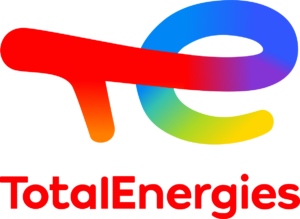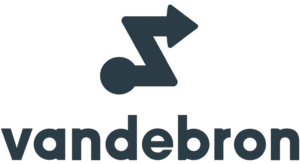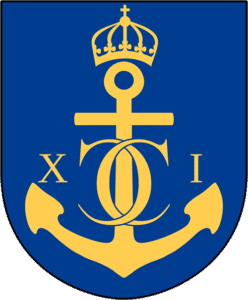What are you looking for?

Efficient customer acquisition and customer management processes are important to any company’s bottom line, but it becomes even more critical when delivering and managing customers’ home utilities. These high-stakes situations mean that providers have to get it right every time, and that a poor experience doesn’t just mean an unhappy customer; it could mean a customer has trouble accessing the utilities they need to survive.
That’s why TotalEnergies Power and Gas Belgium (formerly Lampiris), an affiliate of the new power and gas retail markets of French group TotalEnergies, committed themselves to revamping its customer acquisition and onboarding processes. As a retailer of green power, natural gas, solar panels and EV chargers, the acquisition of this affiliate is part of the entire TotalEnergies organization’s ambition for net 0 emissions. Transforming the customer acquisition and onboarding processes to provide better customer experiences and deliver a faster time to value was seen as an extension of the ethos driving that ambition.
However, the IT Activation Tribe responsible for customer data processing and validation from contract to delivery faced a few obstacles in the way of achieving this transformation. First, the team managed their existing customer acquisition and onboarding processes with a custom Java tool with all of the workflows hardcoded. The cost to maintain this application was too high, and multiple elements of the system were not user-friendly. For example, the Google Web Toolkit (GWT) technology used to power the front-end user interface was not evolving, and when combined with outdated practices lead to a non-user friendly tool. Additionally, any change made in the system was very costly, which further impacted the efficiency of the processes.
Efficiency and user-friendliness were especially important elements for TotalEnergies Belgium to prioritize – changing regulations and constraints in the global and European energy markets were galvanizing the entire organization to constantly adapt workflows to meet new regulatory needs, which was even more difficult to accomplish with the old system.
Secondly, the existing system for managing these customer acquisition and onboarding processes inhibited how the developers on the IT Activation tribe could complete their work. Since rules and workflows were hardcoded directly in the app, it was not possible to have a full picture of the client path, which made process optimization almost impossible.
It also complicated communication between developers and non-technical roles integral to the processes, which was a major challenge that TotalEnergies Belgium needed to overcome. This fact was made even more complicated by the multinational and multilingual component of the larger TotalEnergies organization; while the IT Activation tribe is located in Liège, Belgium, other non-technical roles involved in customer acquisition and activation processes were dispersed across different teams, offices, and countries – and they had no easy way to visualize or collaborate on the work needed to successfully manage these workflows.
This combination of outdated, hard-to-manage technologies, compounded by fast-moving industry regulations and a collaboration issue, was actually driving developers to leave the team for different opportunities with newer technologies. This talent drain was the last straw for Adrien Fourneau, SalesForce and IT Activation and Care Tribe lead.
“We needed to make a push to make the entire process, from customer acquisition, validation, and onboarding to account management, more user friendly for our developers and for our non-technical colleagues,” he says.
The first step: find a way to better orchestrate the disparate elements and human tasks in these workflows.
Fourneau and his team decided to bring process orchestration with highly visual elements into the process to automate human tasks, increase efficiencies, and facilitate better collaboration. While they wanted to update the entire process from acquisition to account management, they decided to gain experience with process orchestration by focusing first on smaller workflows, then translating those learnings to the full registration process.
To better update these workflows and increase visibility, Fourneau and his team examined each workflow within the full registration process to define what success would look like for each, and to set specific goals to measure that success.
For customer acquisition, the team identified two specific process types: the “fully automated” (or fully completed) subscription process, and all other subscriptions. For fully automated subscriptions, the team wanted to focus on decreasing the cost to acquire a customer and increase the overall conversion rate by making the subscription process more efficient for customers and the team handling their subscription process.
This push for efficiency would ideally include eliminating excess nurturing calls placed to every prospect in the process, as well as decreasing or eliminating the need for excess manual validation. Previously, the process required an agent to manually review and validate each subscription, which made the process longer and more costly for TotalEnergies Belgium. For the other subscription process, the team wanted to make the process more adaptable and easy for agents to handle by automating customer contact through email and optimizing the graphic user interface (GUI) that agents and customers both used.
Overall, the team decided that they needed a flexible, adaptable process orchestration platform that incorporated BPMN modeling and other visual elements to better collaborate on process improvements and deliver more impactful process monitoring for iterative updates.
When choosing a process orchestration platform to deliver on this proposed solution, Fourneau turned to his team for their input. At the recommendation of his team, Fourneau looked into Camunda.
While researching Camunda, Fourneau was impressed by its ease of use, and how Camunda’s flexibility empowered his team’s developers to monitor a process, identify an existing or potential pain point, and quickly make changes to a workflow to improve the process.
“Camunda has really helped our team gain better visibility into the process, and share that visibility with others outside of our team,” Fourneau said. “Camunda is definitely appreciated by the developers.”
To really test the potential impact Camunda could have on the entire registration process, Fourneau decided to use the Camunda to improve two smaller but time-sensitive processes within TotalEnergies Belgium.
First, Fourneau and his team turned to a localized group of customers in France that needed to be integrated into the TotalEnergies Belgium system. These 300,000 customers represented clients looking to find better prices and were ready to change their energy provider. Integration for the entire group had to happen within two months. With no existing tool or process in place to facilitate this addition, Fourneau’s team decided to test out Camunda’s capabilities here.
“This was quite a big risk for us,” Fourneau confided. “We weren’t experts yet on how to use Camunda, and this workflow was very complex.”
While this process would follow the same steps as the overall customer acquisition process, the customer data could only be added via manual exports of comma-separated value files (CSVs), which meant data treatments had to take place before import. Additionally, there were lots of exceptions to account for in the process, with customers spanning both B2B and B2C spaces.
Despite these challenges, Fourneau’s team was able to successfully create this workflow and implement these new customers into TotalEnergies Belgium within the tight timeframe thanks to Camunda. After this success in real conditions, his team turned to a main project using the Enterprise platform, to handle all potential registration scenarios, including house moves, provider changes, and new houses linking for the first time to the power network. These processes, while less time-constrained, represented a huge milestone in customer relationships and carried a lot of reputational importance for the company. Again, Fourneau’s team saw success by using Camunda, and turned back to the larger customer acquisition and validation processes.
“Between the learnings we gained from these projects, and the expertise that Camunda’s support team offered us throughout the process redesign, we were confident that we had the right tool in place and were developing the internal knowledge needed to successfully automate these processes.”
The team was delighted to see that, thanks to the increased visibility and flexibility that Camunda delivered, they were able to meet their ambitious project goals. Critically, increased efficiencies within the workflow meant that there were fewer agent interventions, particularly in the full subscription process. That reduction saved both time and money. In fact, 40,000 registrations are fully automated each year, with dedicated buying groups seeing automation rates of more than 70%. An additional 200,000 registrations are more effectively processed annually thanks to Camunda workflows; agent intervention is only introduced into the process when absolutely necessary, and each manual task that is closed triggers the automation to continue the client registration through the workflow without additional manual intervention.
This efficiency also means a better conversion rate overall for TotalEnergies Belgium, bringing more customers into the system at lower costs in both time and resources. Since implementing the new solution, the conversion rate has improved by 20%.
“With better visibility and responsive reporting throughout the process, agents can take the right action at the right time and place,” explains Fourneau.
TotalEnergies Belgium has also been able to track specific cost savings and ROI within their customer acquisition and validation processes. To date, the cost per new customer acquired has dropped by 15%, from an average of 5€ per customer to 4,25€. Additionally, TotalEnergies Belgium has reported an average annual savings of 200,000€ due to increased efficiencies in the process.
And while it might not be quantifiable, the improvement on both the customer experience and the developer experience has been undeniable.
“By getting rid of our unstable and difficult-to-adapt legacy systems, we have improved things for everyone,” confirms Fourneau. “Customers are informed immediately after subscribing about their status, or are contacted by agents only when needed.”
“Our developers are very happy with Camunda.”
Camunda is now a key tool for all processes within the TotalEnergies affiliate in Liege. Every team within that section of the larger organization uses Camunda to manage their workflows, both big and small. Fourneau’s IT Activation Tribe is also in the process of evangelizing Camunda and BPMN modeling into other TotalEnergies affiliates, particularly the power and gas retailers in surrounding countries.
“We work with guilds to share expertise through teams,” explained Fourneau. “Additionally, every architect is a Camunda expert, and we have an Enterprise Architect on our team acting as the single point of contact for Camunda questions both inside and out of our affiliate.”
Overall, TotalEnergies Belgium is embracing Camunda and Modeler in particular. Camunda has become the BPMN tool for analysts and business experts. It allows everyone to have a common layout, pushes use of BPMN in general, and makes the transfer of functional workflows to executable workflows easier.
“Camunda Modeler is on every laptop at TotalEnergies Belgium,” Fourneau confirmed.





Camunda © 2024